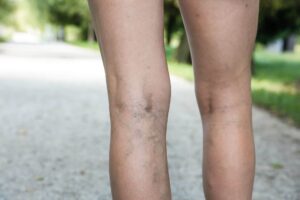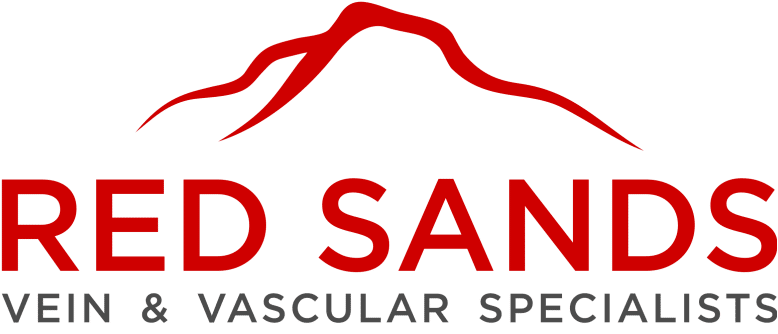About Chronic Venous Insufficiency
Chronic venous insufficiency is one of the most common disease processes, affecting about 25-30% of the adult population in the US. It becomes more common as age increases, and is more frequently seen in women than in men. Symptoms from the disease are diverse and vary with each person, but can significantly impact your ability to perform daily tasks or maintain a regular exercise routine.

Symptoms
The first chronic venous insufficiency symptoms are spider veins and reticular veins. These are small veins that are in the skin or just below the skin surface, and normally aren’t visible. When they become dilated, they are visible as red or blue veins that look similar to a spider’s web. These veins are mostly a cosmetic concern and are typically not associated with any symptoms.
Varicose veins are the next sign of venous disease. These are tortuous veins that bulge out of the skin surface. These veins can be only a cosmetic concern for some people, but many people will have symptoms associated with these veins. Symptoms of varicose veins include pain, aching, burning, cramping, heaviness, itching, tingling, and fatigue. Symptoms usually get worse with long periods of standing, heat and progress during the course of the day. Rest, elevation, and compression usually will relieve the symptoms.
As vein disease progresses, you can have swelling in your legs. This can even happen without seeing any varicose veins. More advanced disease can lead to discoloration, scarring, and ulcer formation.
Causes
In a normally functioning circulatory system, blood is carried from your heart to your legs with arteries. Blood returns from your legs to the heart in veins, which are a lower pressure system. To return blood up the legs against gravity, veins have valves to propagate the blood in one direction. As your leg muscles contract, blood in the veins is forced up and out of the legs through the valves.
Diseased veins become larger in diameter and eventually, the valves stop working correctly. Blood begins to reflux across the valves backward. This leads to increased pressure and pooling of blood in the leg veins. This is called venous insufficiency.
Venous insufficiency causes include problems with the vein wall (the most common cause). There is a genetic component to this type of vein disease. Lifestyle factors such as pregnancy, weight gain, and prolonged standing may also contribute to developing venous insufficiency. Venous insufficiency can also be caused by deep blood clots (DVT), superficial blood clots (thrombophlebitis), obstruction of the veins, and vein malformations.
Diagnosis
Evaluation and diagnosis of chronic venous insufficiency begins with a consultation including a patient history and physical examination. If signs and symptoms of varicose vein disease are present, an ultrasound examination is performed. This is the standard test to diagnose venous insufficiency. The ultrasound also provides a detailed roadmap for any needed treatments. If other causes of venous insufficiency are suspected, additional tests such as CT or MRI exams may be performed.
Treatment Options
Chronic venous insufficiency treatment is customized to each individual. Treatment can include closing problem veins from the inside with ablation and sclerotherapy procedures, and removing varicose veins. These procedures are minimally invasive, performed through only tiny incisions, and do not require a hospital stay.
Chronic Venous Insufficiency treatments include:
- Radiofrequency Ablation (Thermal Ablation)
- Varithena (Chemical Ablation)
- Ambulatory Phlebectomy
- Sclerotherapy
- Endovenous Laser Ablation (EVLA)
- Venaseal
- Superficial Thrombophlebitis
